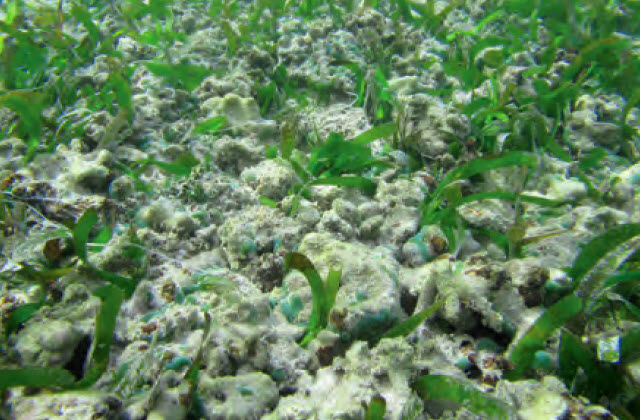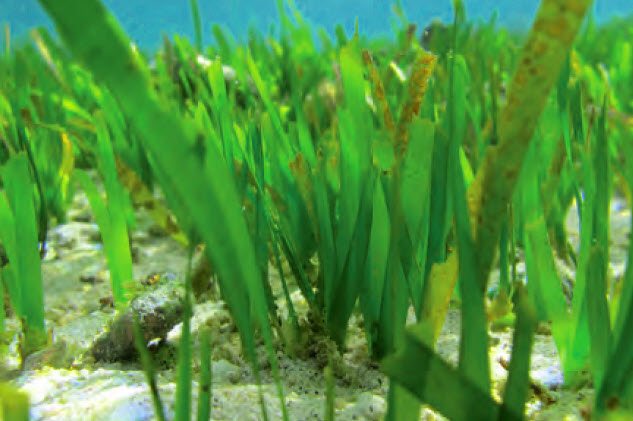Seagrass beds
Seagrass beds are one of the most productive shallow marine ecosystems (Azkab 1988) with a very effective nutrient cycle. The seagrass ecosystem has an important role in supporting the life and development of living bodies in shallow seas, including as a foraging area, a source of dugong food, and a spawning area for various types of marine life.
Indonesian Seagrass Biota
Indonesia has around 31,000 km2 of seagrass beds (Kuriandewa et al. 2003). In this seagrass beds ecosystem, 13 species of seagrass are identified, but these types of seagrass are very difficult to find in one place.
Examples of biota that live in seagrass beds
In the seagrass ecosystem, various biota that are associated with seagrass can also be found, such as sea cucumbers, sea urchins, axes, clams, sea snails, starfish, and various types of fish.
Some examples picture of biota that live in seagrass beds in Lombok (Setyono 2012)
 |
Seagrass beds (Seagrass ecosystem) |
 |
| Seagrass (Clan Enhalus) |
 |
| Sea cucumber (Holothuria atra) |
 |
| Sea urchins (Diadema setosum) |
 |
| Axes (Pinna muricata) |
 |
| Snail (Cypraea annulus) |






